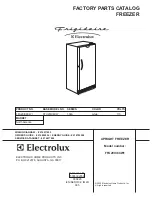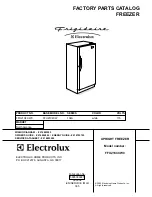
Telephone Helpline: 1300 225 960 (Australia)
3
Installation
Note: If the appliance has not been stored or moved in an upright position, let it stand upright for
approximately 12 hours before operation. If in doubt allow the appliance to stand.
1.
Remove the appliance from the packaging. Make sure that all protective plastic film and coatings
are thoroughly removed from all surfaces
2.
Maintain a distance of 20cm (7 inches)
between the unit and walls or other objects for
ventilation. Increase the distance of the object is a heat source. Do not block front ventilation
grills.
Note: Before using the appliance for the first time, clean the shelves and interior with soapy water.
3.
Set the brakes on the castors to keep the appliance in position.
Operation
It is important that food entering the Blast Chiller/Freezer does not exceed a temperature of 90
o
C.
It is recommended that metal containers / trays are used as other materials such as plastic or polystyrene
containers will act as an insulator and extend blast chilling times.
Sufficient space must be left between products in order to guarantee a sufficient flow of cold air. Ensure
product is not in contact with the internal walls of the unit, and leave sufficient gaps between trays.
Never obstruct the inlet of the evaporator fans.
Products that are more difficult to chill because of their composition and size should be placed in the
centre of the unit.
Blast chilling data refers to standard products (low fat content) with a thickness below 50 mm: therefore
avoid overlaying products on trays or the insertion of pieces with a much higher thickness, as this will lead
to an extension of blast chilling times. Always distribute the product well on the trays and in the case of
thick pieces decrease the amount to blast chill.
Limit the number of times and the duration of time the doors are opened.
The chiller should be used for storage for short periods only.
When removing product that has undergone blast chilling/shock freezing, always wear gloves to protect
the hands from
cold burns.
Summary of Contents for DN492-A
Page 11: ......
Page 12: ...DN492 A_DN494 A_v2 ...






























